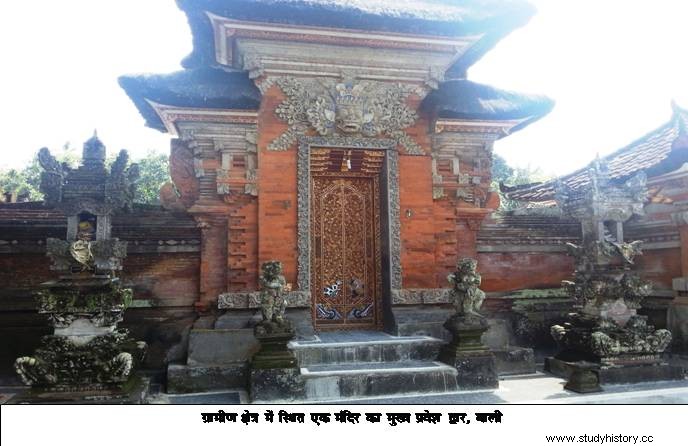
In Balinese language "Pura" means temple. In October 2012, the Archaeological Department of Indonesia surveyed the island of Bali and claimed to have discovered a huge Hindu temple dating back to the fourteenth century AD. Archaeologists informed the country that during excavations in the river basin in East Denpasar, they found a huge stone three feet below the earth and further excavation found that it was in fact the foundation stone of a huge temple. Such stones were found in large numbers which testify that a large number of temples were built in this river area in the fourteenth century.
Pura Taman Ayun (Saraswati Temple)
This temple dedicated to Goddess Saraswati is in Ubud city of Bali. Goddess Saraswati is considered to be the goddess of learning, knowledge and music in Hinduism, so here also Goddess Saraswati is worshiped as the goddess of knowledge and learning. A beautiful pool is also built here, which is the main attraction of this temple. Music programs are held here every day. Ayan means home in Sanskrit. The word Ayun of the island of Bali is derived from the Sanskrit word Ayan.
Pura Besakih Temple
Located in Mount Agung of the island of Bali, this temple is the most beautiful temple in Indonesia, situated in the lap of nature. It is also the largest and most sacred temple in Bali, which is included in the series of important temples of Bali. In 1995, this temple was declared a UNESCO World Heritage Site. The idols of various deities are installed in the temple.
Temples of Ginyar Kshetra
The excavation done in 1986 in Ginyar, located in the south-eastern region of the island of Bali, revealed the Vasa temple, which is 11 meters wide. By 2010, Indonesian archaeologists were able to find 16 more temples buried under the earth in Ginyar.
Tanahlot Temple (Vishnu Temple)
The Tanahlot temple dedicated to Lord Vishnu was built in the 15th century on a huge sea cliff located on the island of Bali. It is famous for its natural beauty and is one of the main attractions of Indonesia. This temple is a big center of faith of the Hindus of the island of Bali. When the tide comes in the sea, the way to the temple is closed and when the tide comes, this path opens so that one can reach the temple. Tourists are not allowed inside the temple. They can see the inside view from the outside railing.
